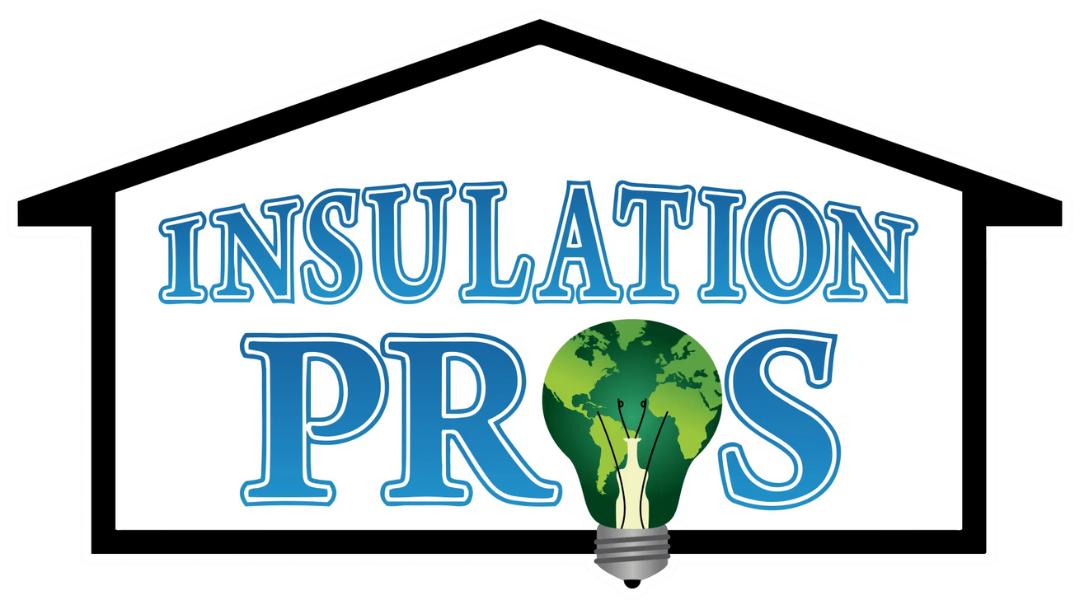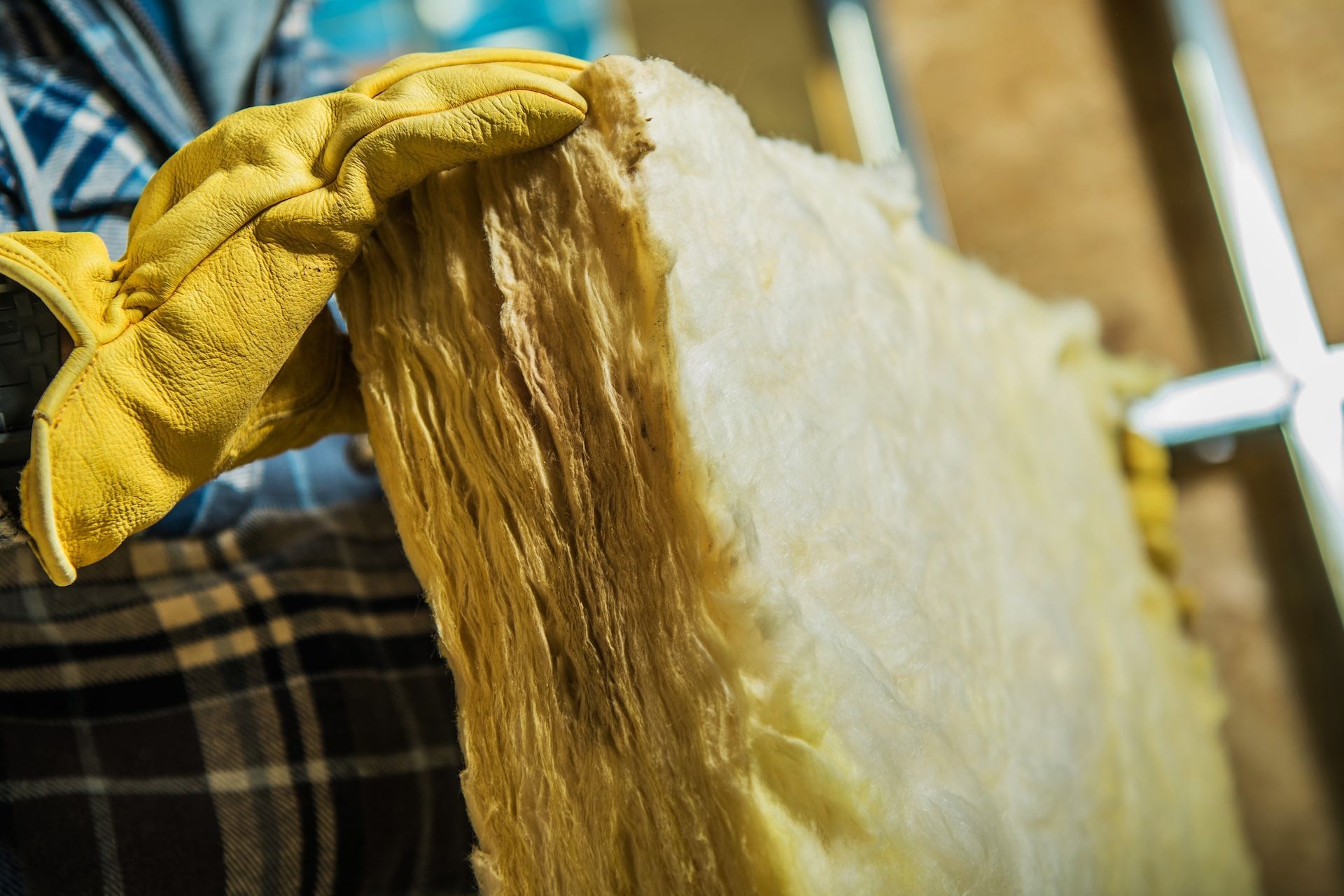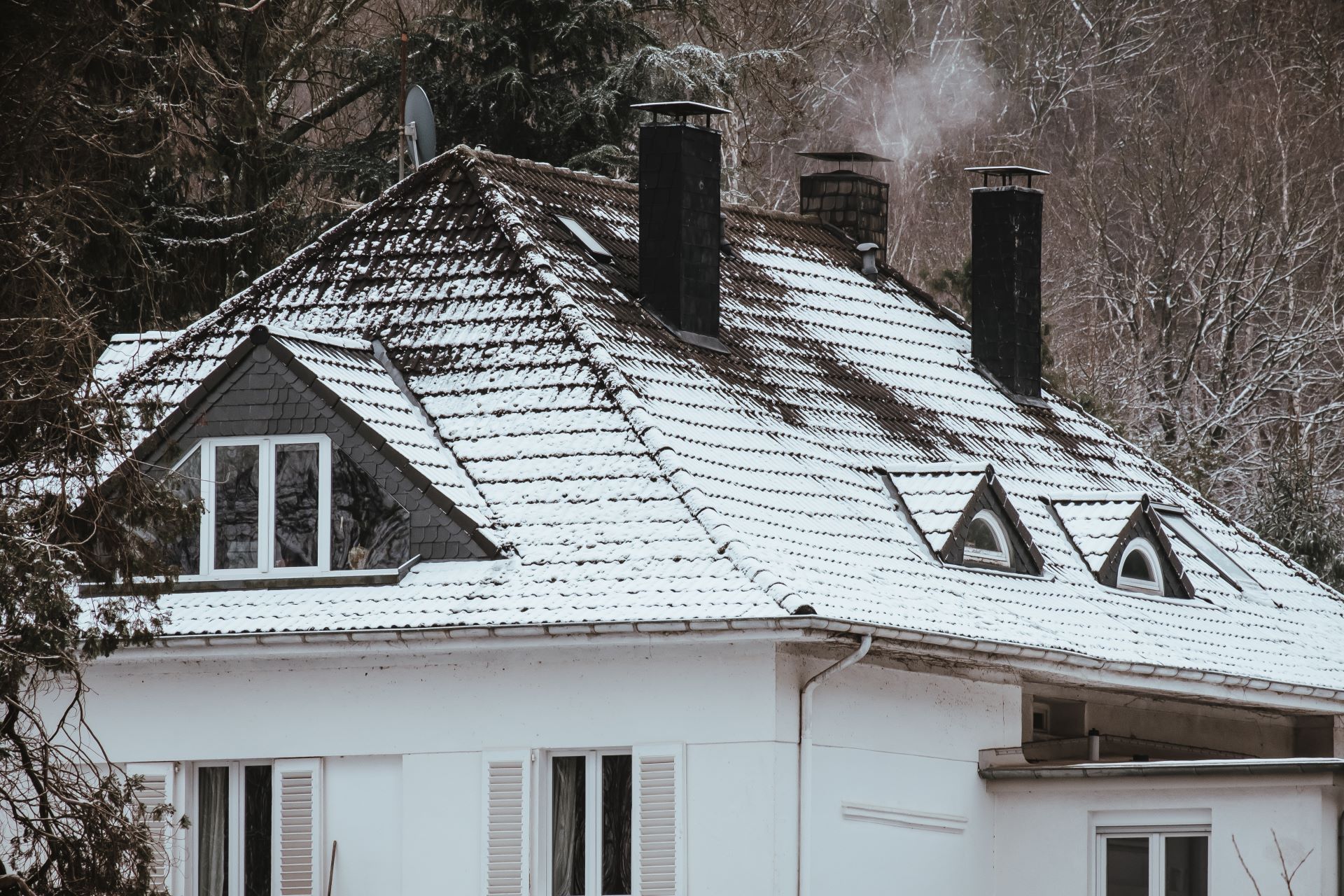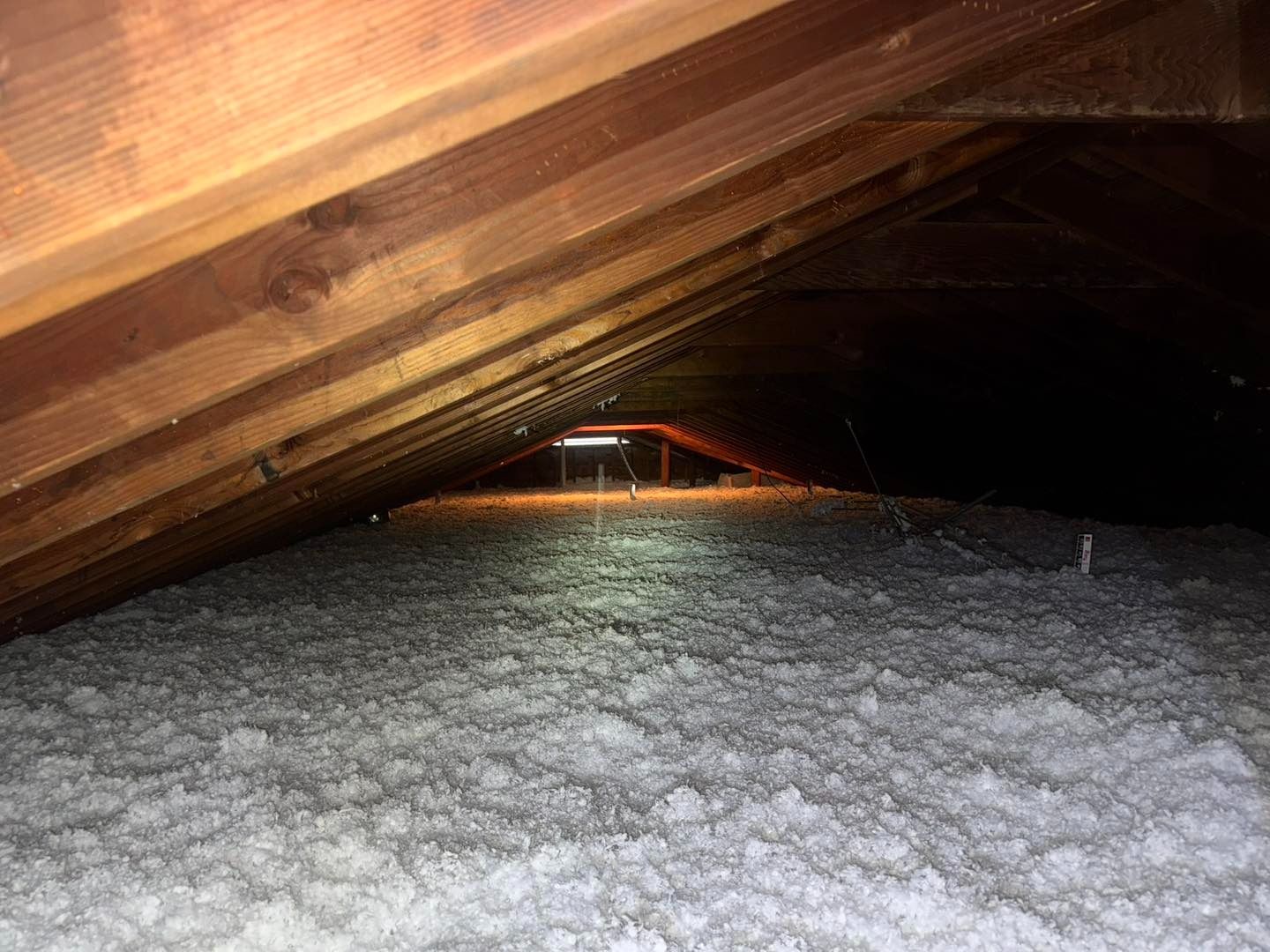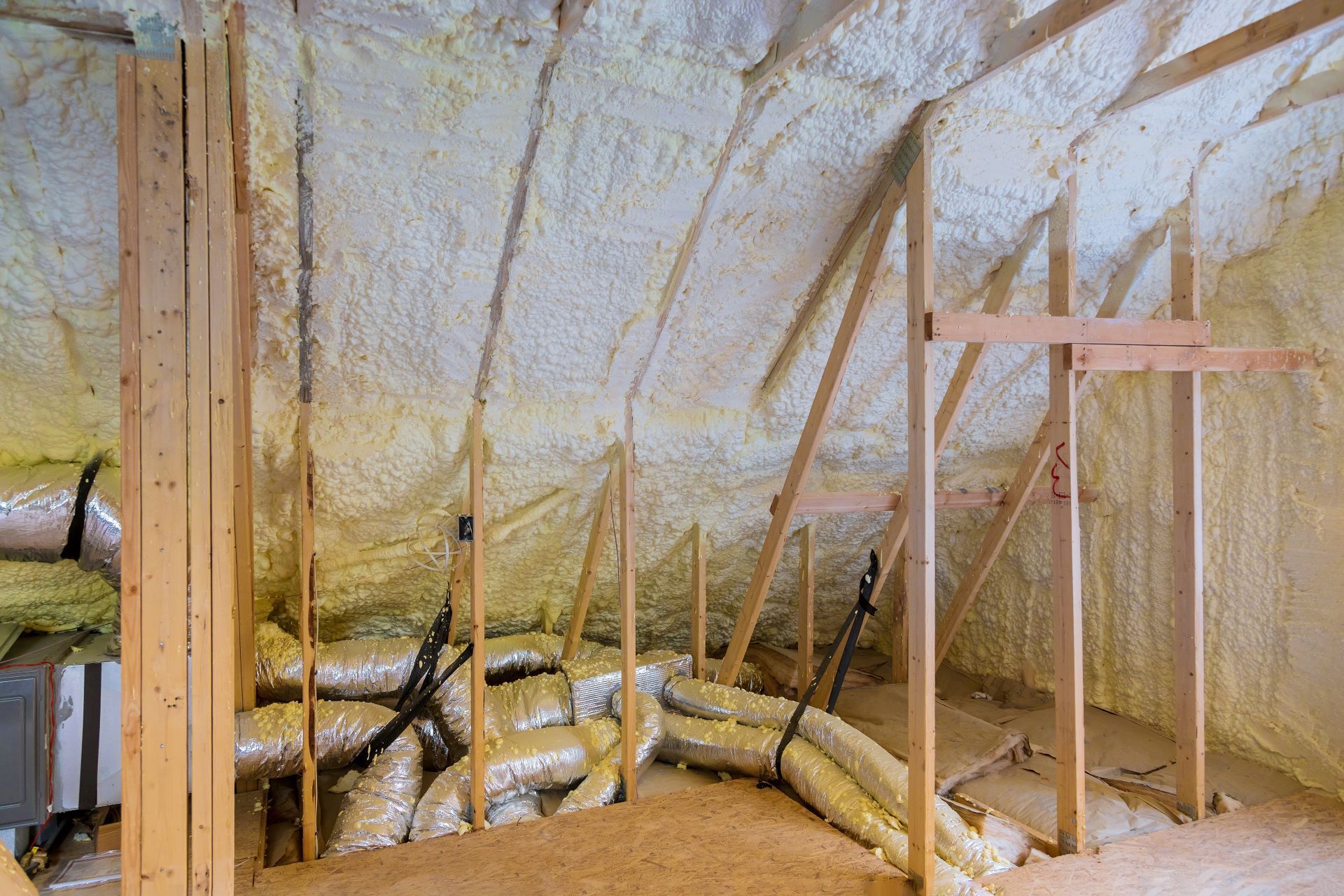Best Insulation for Soundproofing a Home Office in Kansas City
Working from home is easier when your office is quiet and distraction-free. Street traffic, barking dogs, kids at play, or the television in the next room can ruin focus. The best long-term solution is insulation. Unlike quick fixes like rugs or foam panels, professional insulation blocks noise at the source while keeping your Kansas City home office comfortable year-round. This guide covers the best insulation options for soundproofing your workspace, how they work, and what to consider before choosing.
Sound dampening insulation is one of the smartest upgrades you can make to a home office.

Understanding Sound 101
Noise comes in different forms, which makes soundproofing more technical than hanging a blanket or curtain.
- Airborne Noise: Voices, music, or traffic traveling through air.
- Impact Noise: Vibrations from footsteps or rolling chairs.
- Flanking Noise: Sound sneaking through ducts, outlets, or weak structures.
To reduce noise effectively, insulation materials need
density, absorption, and airtight sealing.
A useful measure is the
Sound Transmission Class (STC) rating:
- A wall without insulation may score STC 30 (conversations audible).
- A wall with proper insulation may score STC 45–60 (conversations muted or inaudible).
Top Insulation Options
Mineral Wool (Rockwool)
- How it works: Dense fibers trap sound waves and reduce vibrations.
- Benefits: Fire-resistant, mold-resistant, excellent thermal insulation.
- Drawbacks: Heavier and pricier than fiberglass.
- Best use: Walls, ceilings, and floors needing serious noise control.
Popular in home studios or offices near busy streets for blocking mid- and high-frequency sounds.
Blown-In Cellulose
- Benefits: Eco-friendly, fills irregular cavities, great noise control.
- Drawbacks: Can settle if not installed properly.
- Best use: Existing walls, ceilings, and attics without major renovations.
Ideal for older Kansas City homes where retrofitting is needed.
Fiberglass Batts
- Benefits: Affordable, DIY-friendly, decent sound absorption.
- Drawbacks: Less effective than mineral wool; must be gap-free.
- Best use: Budget-friendly home office upgrades.
Performs best when paired with resilient channels or double drywall.
Spray Foam (Open- and Closed-Cell)
- Open-cell: Flexible and moderately sound-absorbing.
- Closed-cell: Rigid, better for thermal insulation.
- Best use: Sealing small leaks, ducts, or as part of a larger system.
Not the strongest soundproofing solution alone but excellent for sealing noise leaks.
Denim (Cotton) Insulation
- Benefits: Great acoustic absorption, eco-friendly, safe to handle.
- Drawbacks: More expensive, less widely available.
- Best use: Green home office projects where comfort and sustainability matter.
Sheep Wool Insulation
- Benefits: Natural, breathable, effective acoustic absorption.
- Drawbacks: Higher cost compared to fiberglass.
- Best use: Eco-conscious homeowners seeking natural alternatives.
Supplemental Options
- Mass-Loaded Vinyl (MLV): Heavy sheet material for sound blocking.
- Acoustic Foam Panels: Reduce echo inside the room, not outside noise.
These complement insulation but should not replace it.
Construction Tips That Boost Performance
- Resilient Channels or Double Stud Walls: Break the vibration path.
- Seal Gaps: Use acoustic caulk or spray foam around outlets and vents.
- Upgrade Doors and Windows: Solid-core doors and acoustic windows block traffic noise.
- Use Soft Surfaces: Rugs and curtains absorb sound and add comfort.
Choosing the Right Option for You
- Noise type: Traffic/outdoor → mineral wool or cellulose. Household chatter → fiberglass + sealing gaps.
- Budget: Fiberglass is most affordable, wool and denim are premium.
- DIY or Pro Install: Fiberglass and mineral wool can be DIY. Spray foam and cellulose require professionals.
- Sustainability: Cellulose, denim, and sheep wool are eco-friendly picks.
| Insulation Type | Best Use | Key Strength |
|---|---|---|
| Mineral Wool | Walls, ceilings | Maximum sound absorption |
| Cellulose | Attics, walls | Dense and eco-friendly |
| Fiberglass | Budget projects | Affordable, DIY-friendly |
| Spray Foam | Gaps, sealing | Airtight performance |
| Denim | Eco-conscious installs | Comfortable, safe |
| Sheep Wool | Green homes | Natural, breathable |
Quick Installation Checklist
- Inspect walls, ceiling, and floor for gaps.
- Choose insulation based on budget and noise type.
- Add resilient channels or extra drywall if remodeling.
- Seal around doors, outlets, and windows.
- Install insulation carefully to avoid gaps.
- Add rugs, curtains, and sound-absorbing décor.
- Test the space—add MLV or upgrade windows if needed.
Upgrade Your Insulation Today!
Your home office should help you stay focused, not distract you. The right insulation makes your workspace quieter, more private, and more comfortable.
Insulation Pros specializes in
sound dampening insulation for Kansas City homes and nearby areas. We’ll recommend the right solution, handle installation, and ensure your office is ready for productivity.
Contact us today to create the quiet, comfortable home office you deserve.
Book a Service Today
Recent Posts
Owned
Veteran Owned and Family Operated
Team
Experienced Team at Insulation Pros
Free Quote
Our team offers free estimates
Service
#1 Customer Rated in Kansas City
